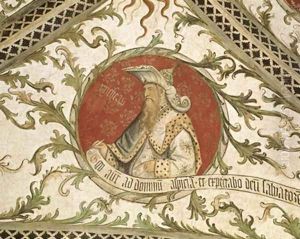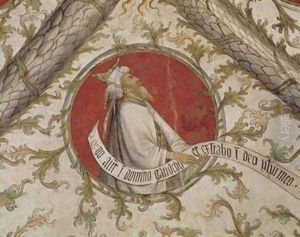d'Allamagna Giusto Paintings
Giusto d'Allamagna, also known as Justus of Allemagne, was a Gothic painter from the late Middle Ages, whose work bridged the transition from the International Gothic style to the early Renaissance. Born around the year 1380, Giusto hailed from the region that is modern-day Germany, which is reflected in his moniker 'd'Allamagna', meaning 'from Germany' in Italian. Despite his German origins, Giusto spent a significant portion of his career in Italy, where he left a lasting impact on the art scene of his time.
Giusto d'Allamagna's move to Italy was pivotal for his career. Settling in the vibrant city of Venice, he became deeply influenced by the rich artistic culture and the emerging Renaissance style. His work is characterized by a blend of the detailed, ornamental elements typical of the Gothic tradition and the early Renaissance's emphasis on perspective and human emotion. This unique fusion is evident in his altarpieces and frescoes, which often depicted religious scenes imbued with a sense of realism and depth.
One of Giusto's most notable works is the altarpiece for the church of San Giorgio Maggiore in Venice, completed in 1450. This masterpiece showcases his ability to integrate Gothic intricacy with the burgeoning Renaissance sensibility towards spatial composition and human form. Throughout his career in Italy, Giusto's art served as a conduit through which the northern Gothic style could blend with the Italian Renaissance's emerging ideas, thereby contributing to the rich tapestry of European art history.
Giusto d'Allamagna's precise death date is uncertain, but he is believed to have died around 1455. Despite the lack of extensive documentation on his life, his surviving works stand as a testament to his skill and innovative approach to art. Through his contributions, d'Allamagna played a crucial role in the evolution of painting, marking the transition from the medieval to the modern in European art. His legacy is preserved in the works he left behind, which continue to be studied and admired for their historical significance and artistic beauty.














